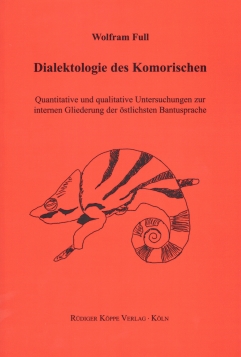


The present work methodologically extends W.J.G. Möhlig’s dialectometrical approach (Dialektometrie) in the African studies by extensively factoring the morphological domain beside the lexical into the quantitative comparison. In addition to the phonological form of the morphemes their position in word structure flow into the evaluation.
The aim is to compare a representative sample of lexical and grammatical morphemes in the analyzed varieties following a consistent scheme. This quantitative comparative method is applied to the Comorian, a Bantu language (G.44) with more than 800.000 speakers. It is the indigenous language of the Comoros, an archipelago halfway between the East-African coast and the northern tip of Madagascar.
The empirical data originate from a yearlong comparative field work in 56 places on all four main islands of the archipelago. There are some deviances from previous publications concerning the dialect number as well as the relations between them due to less established data material of the older works. The pivotal dialectometrical analyses are completed by examinations of interesting single isoglosses of individual islands as well as the whole archipelago.
The main part of the book is framed by an extensive historical introduction to the Comoros, and a comparative study with choice Bantu varieties from the African mainland for analyses of the external relations of the Comorian language.
Gudrun Miehe in Journal of African Languages and Linguistics, 29/2, 2008, 249-252
© 2026 by Rüdiger Köppe Verlag – www.koeppe.de